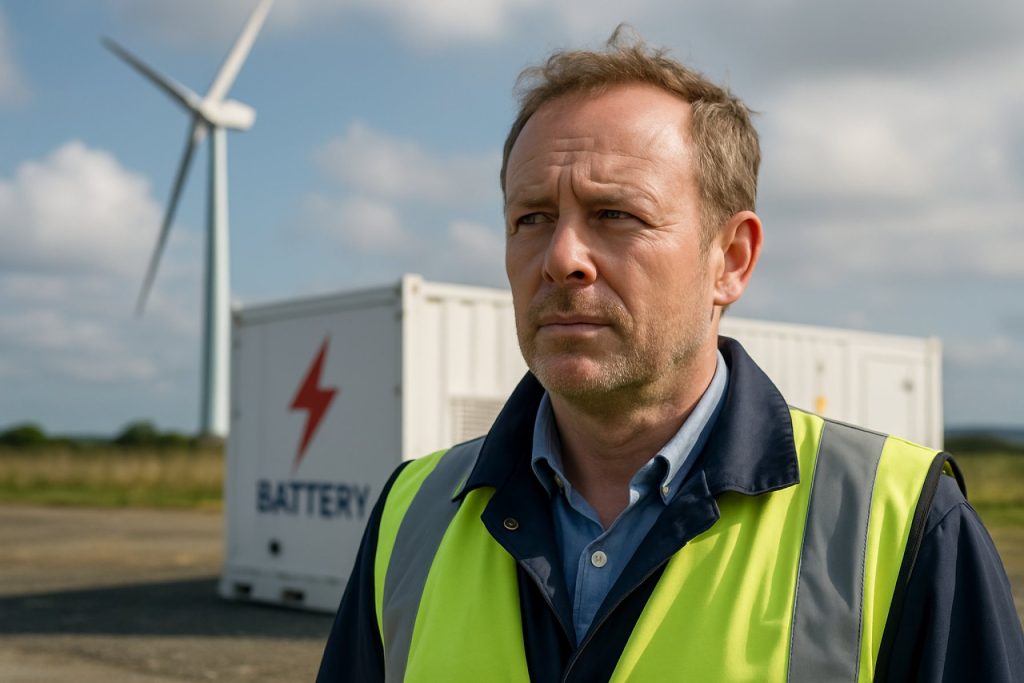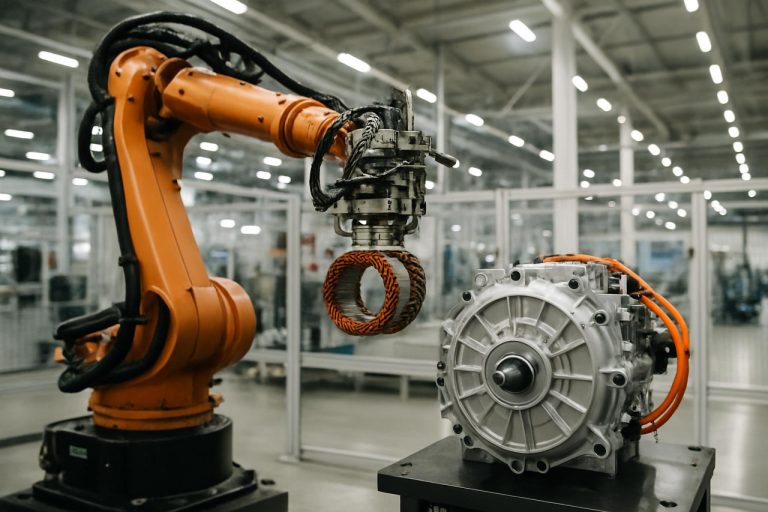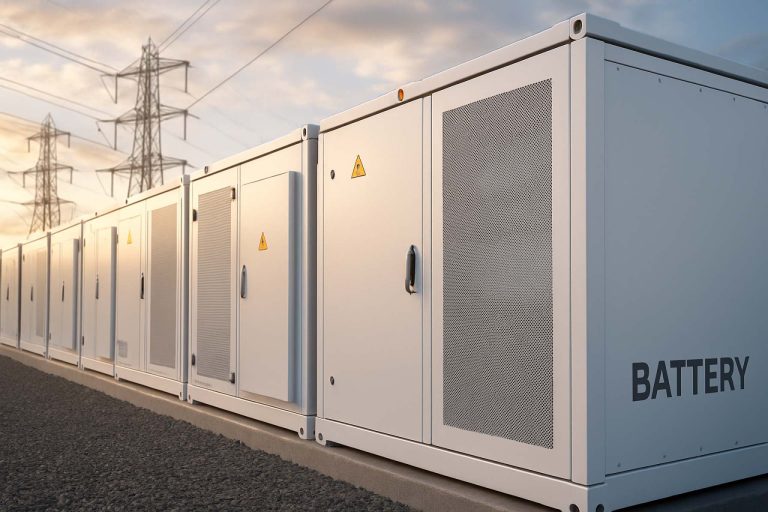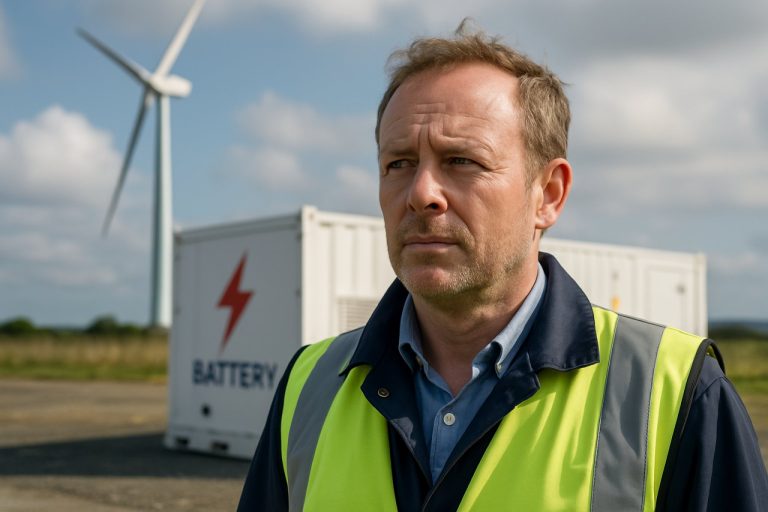
- Battery energy storage systems are evolving, with MegaMAX offering rapid, millisecond-level response for enhanced grid stability.
- Each system combines up to eighteen repurposed electric vehicle batteries (LFP and NMC chemistries), reducing embedded carbon footprint by over 40% and preventing about 100 tons of CO₂e emissions per module.
- MegaMAX provides synthetic inertia, quickly balancing grid frequency during heatwaves, blackouts, or surging power demands—no turbines required.
- Portable and container-sized, units like the MAX1000 can be deployed in under two minutes, supporting both grid emergencies and renewable energy sites.
- Both MAX1000 and the soon-to-come MAX1500 are compact and built for extreme weather, offering 1 to 1.5 megawatt-hours of capacity.
- These systems can cut energy costs up to 50% and unlock new revenue for cities, industries, and communities, enhancing the reliability and flexibility of future clean energy grids.
A new breed of battery energy storage systems now hums quietly on the edge of the grid, ready to leap into action within milliseconds—a far cry from the lumbering response times of the past. The MegaMAX range, unveiled by the U.K.-based technology company Allye Energy, signals a daring leap forward in the fight to keep power flowing, no matter the challenge.
In the heart of these MegaMAX systems, familiar technology gets a second act. Each unit gathers up to eighteen repurposed electric vehicle (EV) battery packs, uniting varied chemistries (LFP and NMC) into a powerful, flexible whole. By breathing new life into these batteries, Allye shrinks the unit’s embedded carbon footprint—by over 40% compared to traditional designs—and keeps roughly 100 tons of CO₂e from entering the atmosphere with every module rolled out.
It’s not just about saving carbon. When Europe groans under the weight of sweltering heatwaves or sudden grid failures—like last month’s blackout plunging Spain and Portugal into darkness—these batteries offer what the old, fossil-fueled giants did for decades: synthetic inertia. As the heartbeat of the grid (measured in crucial 50Hz frequency) falters, MegaMAX leaps to the rescue, pushing or pulling energy with astonishing speed—no spinning turbines required.
For industry, portability is power. The MAX1000, the first of the range, embodies this philosophy. Housed in a container-size shell, it deploys in under two minutes with nothing more than a standard hook loader truck. Grid operators can whisk it to trouble spots or park it to buffer renewable projects, all without shovels or cranes.
Allye Energy’s innovation isn’t just a technical marvel; it’s a timely reply to rising anxieties. Recent substation fires at Heathrow and London’s Maida Vale, coupled with surging demand for electrification, sharpen the need for adaptable, resilient energy stores. As power generation tilts toward intermittent renewables—wind and solar now among the cheapest sources—the grid’s century-old rules of balance grow fragile.
The MegaMAX range offers two models: the MAX1000, with one megawatt-hour (MWh) of capacity, and the forthcoming MAX1500, just shy of 1.5 MWh and set to enable ultra-fast megawatt-scale charging. Both conserve the same compact footprint: 6.17 meters by 2.55 meters by 3.125 meters, with robust temperature (-10°C to 40°C) and humidity resistance, making them reliable partners even in harsh conditions.
By slashing energy costs up to 50% and unlocking new streams of revenue through grid services and flexibility markets, these storage giants invite not only stability but fresh economic opportunity. Cities, factories—even entire communities—stand to benefit as backup power evolves from merely emergency lights to an agile pillar of everyday life.
As the world pivots toward cleaner energy systems, traditional grid inertia fades. But innovation steps in, reviving old technology for new battles and turning crisis into catalyst. The MegaMAX range is not just a promise; it’s a preview of the power grid’s next act.
Discover more about innovative technology shaping our world at BBC or explore broader trends in energy at Reuters.
Key takeaway: By blending upcycled EV batteries and lightning-fast response times, portable battery systems like MegaMAX are poised to rewrite the rules of grid resilience—providing cleaner, more dependable power just when the world needs it most.
Battery Storage Revolution: 7 Shocking Truths About Allye’s MegaMAX Changing the Power Grid Forever
Introduction
The recent unveiling of Allye Energy’s MegaMAX battery energy storage systems is making waves in the global push towards grid resilience and decarbonization. While much of the conversation focuses on the technology’s speed and sustainability, a host of additional facts, features, use cases, and industry trends deserve attention. Below, we dive deep into the facts you need to know, answering critical questions and offering actionable insights.
—
Extended Facts & Insights
1. What Sets MegaMAX Apart? Detailed Features & Specs
– Hybrid Chemistry Integration: MegaMAX uniquely combines LFP (Lithium Iron Phosphate) and NMC (Nickel Manganese Cobalt) cell types within a single BESS (Battery Energy Storage System), increasing flexibility and cycle life. Most competitors offer only one chemistry per system.
– Second-Life Battery Applications: By using up to 18 repurposed EV battery packs per unit, MegaMAX significantly reduces waste. Second-life battery use is endorsed in the McKinsey report on sustainable battery value chains (Source: McKinsey & Company).
– Synthetic Inertia Support: Its rapid-response (90% of lithium, cobalt, and nickel (Source: Green Alliance).
—
Pros, Cons & Controversies Overview
Pros:
– Drastically lowers embodied emissions
– Saves on capex and opex
– Increases energy resilience and grid flexibility
– Rapid, plug-and-play deployment
Cons:
– Battery uniformity may be lower
– Long-term performance still under study
– Recycling after BESS end-of-life can be complex
Controversies:
– Some experts question longevity and residual risk of thermal runaway in second-life packs unless strictly managed.
– Regulatory acceptance varies by region, though the EU is making rapid progress on circular battery standards.
—
How-To: Deploying MegaMAX or Similar BESS
1. Identify Grid Weakness or Opportunity: Pinpoint substations, sites, or events vulnerable to outages.
2. Secure Permits and Interconnection: Work with local DNOs or grid operators.
3. Install and Commission: Use a hook loader truck for placement; connect to grid and communications.
4. Integrate with Monitoring Software: Use provider dashboard for health, performance, and alerts.
5. Optimize for Local Needs: Set use-case (backup, peak-shaving, grid balancing).
—
Quick Actionable Tips
– Evaluate Resilience Needs: If your business or community is reliant on uninterrupted power, consider mobile BESS units for rapid deployment.
– Request Life Cycle Documentation: Ask for LCAs from suppliers to validate sustainability claims.
– Explore Revenue Streams: Contact grid operators to understand if ancillary service markets are open to storage assets.
– Review Maintenance Guarantees: Ensure second-life BESS comes with robust diagnostics and maintenance contracts.
– Stay Informed: Follow advancements in battery regulation and recycling at reputable sites like BBC and Reuters.
—
Conclusion
Allye Energy’s MegaMAX battery energy storage systems aren’t just a step forward—they are a leap towards a cleaner, more resilient, and flexible power grid. The strategic use of second-life EV batteries maximizes value while minimizing waste and carbon footprint. As more utilities and industries face the dual challenge of electrification and climate volatility, solutions like MegaMAX offer real answers for today and tomorrow.
Key Takeaway:
Second-life battery systems like MegaMAX provide affordable, sustainable, and rapid-response storage to power a new era of grid reliability. Now is the time for businesses, utilities, and communities to evaluate their energy resilience strategies and embrace the future of portable energy storage.
For more credible insights on energy tech and the global clean energy transition, explore BBC and Reuters.



